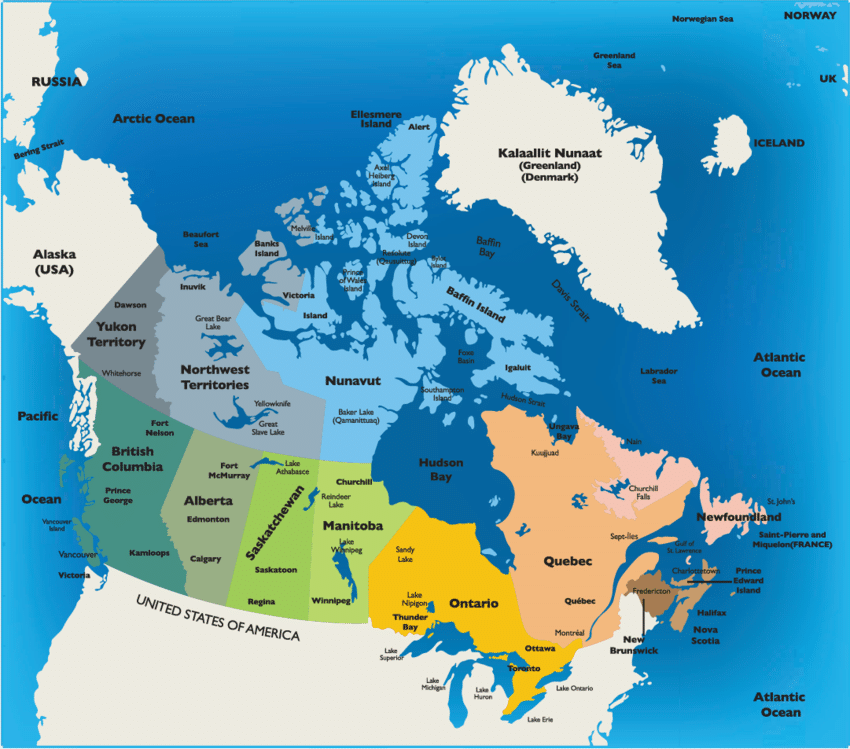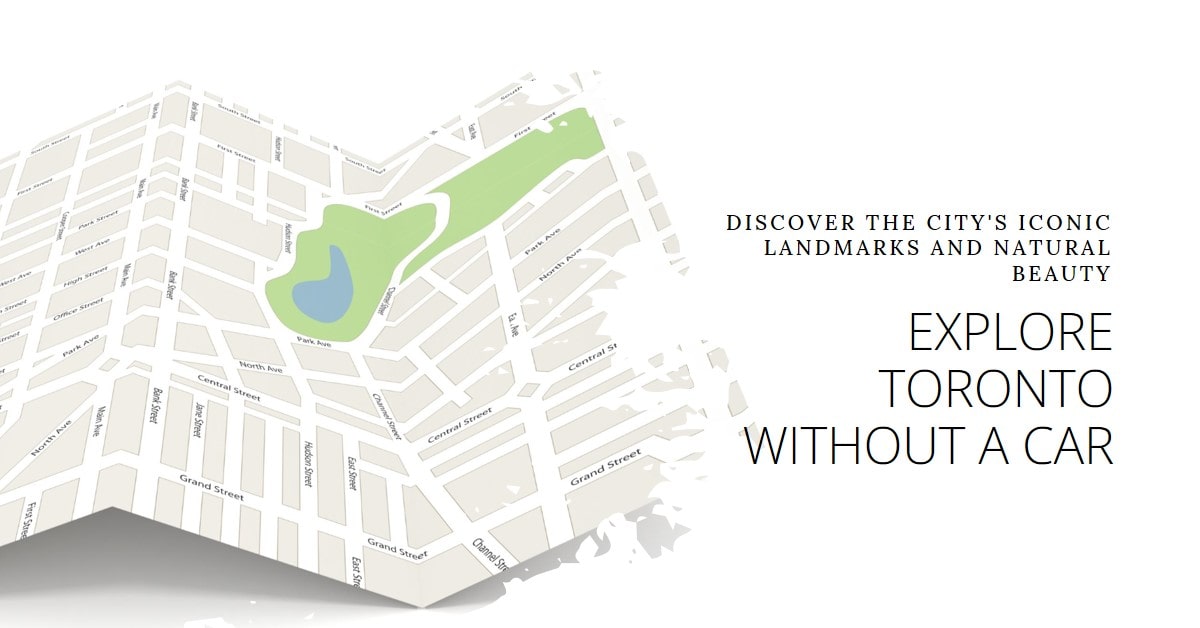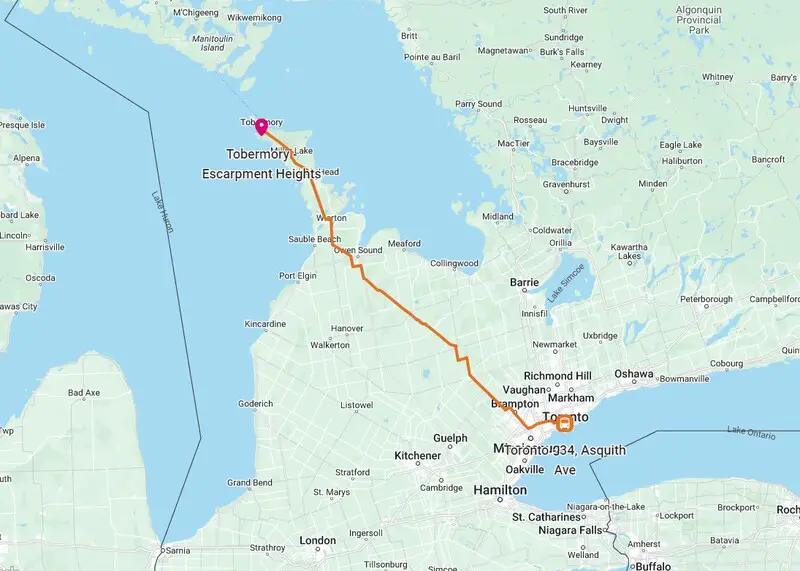In Canada, abbreviations are important in various aspects of daily life. From official documents to casual conversations, abbreviations are widely used to save time and resources. This blog section will explore what abbreviations are and discuss their importance in Canada.
What are Abbreviations?
Abbreviations are shortened words or phrases, typically created by taking one or more letters from each word. They are used to represent longer terms more concisely. Abbreviations can include acronyms, initialisms, and shortened forms of common expressions.
Importance of Abbreviations in Canada
Abbreviations are crucial in Canada for various reasons. They help streamline communication, simplify written materials, and improve efficiency in government, business, and everyday interactions. Abbreviations are commonly used in official documents, street addresses, postal codes, and in the naming of provinces and territories. They help save time and facilitate easier understanding and recognition of terms. Additionally, abbreviations are essential in the digital age, where character limits and quick communication are paramount.
Canadian Geographic Abbreviations
Provincial and Territorial Abbreviations
In Canada, abbreviations are commonly used to represent the provinces and territories. These abbreviations are crucial in various aspects, including official documents, addresses, and communication. Here are the abbreviations for each province and territory in Canada:
- Alberta – AB
- British Columbia – BC
- Manitoba – MB
- New Brunswick – NB
- Newfoundland and Labrador – NL
- Northwest Territories – NT
- Nova Scotia – NS
- Nunavut – NU
- Ontario – ON
- Prince Edward Island – PE
- Quebec – QC
- Saskatchewan – SK
- Yukon – YT
These abbreviations are widely used in postal codes, maps, and other geographical references to provide a concise representation of each province and territory in Canada.
Abbreviations for Major Canadian Cities
In addition to provincial and territorial abbreviations, Canada also has abbreviations for its major cities. These abbreviations are commonly used in addresses, shipping labels, and other written materials. Here are some examples of major Canadian cities and their abbreviations:
- Toronto, Ontario – ON
- Vancouver, British Columbia – BC
- Montreal, Quebec – QC
- Calgary, Alberta – AB
- Ottawa, Ontario – ON
- Edmonton, Alberta – AB
- Winnipeg, Manitoba – MB
- Quebec City, Quebec – QC
- Halifax, Nova Scotia – NS
- Victoria, British Columbia – BC
These city abbreviations simplify and streamline communication, making identifying and referencing specific locations within Canada easier.
In conclusion, abbreviations are essential to Canadian geography and play a vital role in communication and written materials. Understanding and utilizing these abbreviations can greatly enhance efficiency and accuracy in Canadian life.
Canadian Government Abbreviations
Abbreviations for Federal Departments and Agencies
In Canada, abbreviations are commonly used to represent the various federal departments and agencies. These abbreviations are crucial in official documents, government communications, and administrative processes. Here are some examples of federal department and agency abbreviations:
- Canada Revenue Agency – CRA
- Department of National Defence – DND
- Employment and Social Development Canada – ESDC
- Health Canada – HC
- Royal Canadian Mounted Police – RCMP
- Transport Canada – TC
These abbreviations are widely recognized and used in government-related communications, reports, and publications to provide concise, standardized references to federal departments and agencies.
Abbreviations for Provincial and Territorial Governments
Like federal departments and agencies, provincial and territorial governments in Canada also have their own abbreviations. These abbreviations are commonly used in official documents, addresses, and communication. Here are the abbreviations for each province and territory in Canada:
- Alberta – AB
- British Columbia – BC
- Manitoba – MB
- New Brunswick – NB
- Newfoundland and Labrador – NL
- Northwest Territories – NT
- Nova Scotia – NS
- Nunavut – NU
- Ontario – ON
- Prince Edward Island – PE
- Quebec – QC
- Saskatchewan – SK
- Yukon – YT
These abbreviations are widely used in postal codes, official documents, and communication between government entities at the provincial and territorial levels. Understanding and utilizing these abbreviations is important for efficient and accurate communication within the Canadian government system.
Canadian Business and Finance Abbreviations
Abbreviations for Canadian Stock Exchanges
In Canadian business and finance, abbreviations are widely used to represent the various stock exchanges. These abbreviations are essential in financial reports, stock market updates, and investment analysis. Here are some common abbreviations for Canadian stock exchanges:
- Toronto Stock Exchange – TSX
- Canadian Securities Exchange – CSE
- NEO Exchange – NEO
- Bourse de Montréal – MX
- Aequitas NEO Exchange – ANX
These abbreviations are recognized and utilized by professionals in the financial industry. They provide a convenient and standardized way to refer to specific Canadian stock exchanges.
Common Abbreviations in Canadian Banking and Finance
In the Canadian banking and finance sector, abbreviations are commonly used to represent various institutions and financial terms. These abbreviations help streamline communication and ensure an efficient exchange of information. Here are some common abbreviations in Canadian banking and finance:
- Bank of Montreal – BMO
- Royal Bank of Canada – RBC
- Toronto-Dominion Bank – TD
- Canadian Imperial Bank of Commerce – CIBC
- Exchange-traded fund – ETF
- Registered Retirement Savings Plan – RRSP
- Tax-Free Savings Account – TFSA
These abbreviations are frequently used in financial documents, banking statements, and investment discussions. Familiarity with these abbreviations is crucial in understanding and navigating the Canadian banking and finance industry.
Canadian Education Abbreviations
Abbreviations for Canadian Universities and Colleges
In Canadian education, abbreviations are commonly used to represent universities and colleges. These abbreviations provide a convenient way to refer to these institutions, especially in written documents, transcripts, and official correspondence. Here are some common abbreviations for Canadian universities and colleges:
- University of Toronto – UofT
- McGill University – McGill
- University of British Columbia – UBC
- York University – York U
- University of Alberta – U of A
- Ryerson University – Ryerson
These abbreviations are widely recognized within the Canadian educational community and help to streamline communication and documentation.
Abbreviations for Canadian Educational Degrees and Certifications
Canadian educational degrees and certifications also have their own set of abbreviations. These abbreviations are used on academic transcripts, resumes, and professional designations. Here are some common abbreviations for Canadian educational degrees and certifications:
- Bachelor of Arts – BA
- Bachelor of Science – BSc
- Master of Business Administration – MBA
- Doctor of Philosophy – PhD
- Certified Professional Accountant – CPA
- Registered Nurse – RN
Familiarity with these abbreviations is essential for students, professionals, and educational institutions in Canada to represent academic achievements and qualifications accurately.
Canadian Transportation Abbreviations
In Canadian transportation, abbreviations are crucial in simplifying communication and enhancing efficiency. Whether you are a frequent traveler, aviation professional, or transportation enthusiast, understanding these abbreviations can greatly benefit you. Here, we will explore two essential areas of Canadian transportation abbreviations: airports and airlines.
Abbreviations for Canadian Airports
Regarding Canadian airports, abbreviations are commonly used to refer to each airport quickly and conveniently. These abbreviations are often used in flight schedules, baggage tags, and other airport-related documentation. Some examples of Canadian airport abbreviations include:
- Toronto Pearson International Airport – YYZ
- Vancouver International Airport – YVR
- Montreal–Pierre Elliott Trudeau International Airport – YUL
- Calgary International Airport – YYC
- Edmonton International Airport – YEG
These airport abbreviations streamline identifying and referencing specific domestic and international airports.
Abbreviations for Canadian Airlines
The Canadian airline industry uses abbreviations to identify and differentiate various airlines. These abbreviations are commonly seen on flight tickets, boarding passes, and other airline-related documents. Here are a few examples of Canadian airline abbreviations:
- Air Canada – AC
- WestJet Airlines – WS
- Porter Airlines – PD
- Air Transat – TS
- Sunwing Airlines – WG
Airlines can quickly and accurately represent themselves using these abbreviations, while passengers and industry professionals can easily recognize and differentiate between airlines.
Familiarity with these Canadian transportation abbreviations is essential for smooth and efficient communication within the transportation industry and for travelers to navigate seamlessly through their journeys.
Canadian Sports Abbreviations
In Canadian sports, abbreviations are widely used to simplify communication and enhance efficiency. Whether you are a dedicated sports fan, a sports journalist, or an athlete, understanding these abbreviations is crucial for seamless communication within the industry. Here, we will explore two essential areas of Canadian sports abbreviations: sports leagues and sports teams.
Abbreviations for Canadian Sports Leagues
Regarding Canadian sports leagues, abbreviations are commonly utilized to represent each league concisely. These abbreviations are frequently seen in game schedules, standings, and other league-related information. Some examples of Canadian sports league abbreviations include:
- National Hockey League – NHL
- Canadian Football League – CFL
- Major League Soccer – MLS
- Canadian Women’s Hockey League – CWHL
- Major League Baseball – MLB
Sports organizations can effectively communicate league information using these abbreviations, and fans can easily identify and connect with their favorite leagues.
Abbreviations for Canadian Sports Teams
Similarly, in Canadian sports, abbreviations denote specific sports teams. These abbreviations are commonly found in team rosters, game broadcasts, and other team-related documentation. Here are a few examples of Canadian sports team abbreviations:
- Toronto Maple Leafs (NHL) – TOR
- Montreal Canadiens (NHL) – MTL
- Toronto Raptors (NBA) – TOR
- Calgary Flames (NHL) – CGY
- Vancouver Whitecaps FC (MLS) – VAN
By utilizing these abbreviations, teams can be easily identified, and fans can show their support for their favourite teams with concise and recognizable abbreviations.
Familiarity with these Canadian sports abbreviations is essential for effective communication within the sports industry and for fans to engage with their beloved sports leagues and teams.
Canadian Military Abbreviations
In the Canadian Armed Forces, abbreviations are crucial in facilitating effective communication and enhancing efficiency. Understanding these abbreviations is vital whether you are a military personnel, a defence analyst, or simply interested in the Canadian military. Here, we will explore two essential areas of Canadian military abbreviations: Canadian Armed Forces and military ranks and units.
Abbreviations for Canadian Armed Forces
When referring to the Canadian Armed Forces, abbreviations are commonly used. These abbreviations are often seen in official documents, military communications, and news reports. Some examples of Canadian Armed Forces abbreviations include:
- Canadian Armed Forces – CAF
- Royal Canadian Navy – RCN
- Canadian Army – CA
- Royal Canadian Air Force – RCAF
- Canadian Joint Operations Command – CJOC
By utilizing these abbreviations, the Canadian Armed Forces can effectively communicate and streamline information flow within the defense community.
Abbreviations for Military Ranks and Units
Similarly, in the Canadian military, abbreviations represent different military ranks and units. These abbreviations are frequently used in official records, military personnel identification tags, and unit announcements. Here are a few examples of Canadian military rank and unit abbreviations:
- Chief of Defense Staff – CDS
- General – Gen
- Colonel – Col
- Infantry – Inf
- Armoured Regiment – AR
- Military Police – MP
By utilizing these abbreviations, the Canadian military can ensure clear and concise communication amongst its ranks and facilitate efficient operations.
Familiarity with these Canadian military abbreviations is essential for effective communication within the defense industry and for individuals to better understand the Canadian Armed Forces and its operations.
Canada Provinces Abbreviation
In today’s fast-paced world, abbreviations have become a common way of quickly referring to various countries, states, and organizations. One such abbreviation that stands out is “Canada.” Renowned for its vast landscapes, vibrant multiculturalism, and progressive values, Canada is revered for its beauty, diversity, and overall high quality of life.
As an abbreviation, “Canada” encapsulates the essence of a nation that has achieved global recognition and consistently symbolizes inclusivity, opportunity, and cultural richness. Join us as we delve into the facets that make the abbreviation “Canada” so powerful and captivating.
Canada short form- Abbreviation for Canada
The Short form of Canada is CAN. It is the second largest country in the world by land area, covering approximately 9.98 million square kilometres.
Abbreviations for Canadian Provinces
Canadian provinces abbreviations: Alberta, British Columbia, Manitoba, New Brunswick, Newfoundland and Labrador, Nova Scotia, Ontario, Prince Edward Island, Quebec, and Saskatchewan.
Canada abbreviation 2 letters:
A.B. – Alberta
BC – British Columbia
MB – Manitoba
NB – New Brunswick
NL – Newfoundland and Labrador
NS – Nova Scotia
N.T. – Northwest Territories
ON – Ontario
PE – Prince Edward Island (formerly P.E.I.)
Q.C. – Quebec
SK – Saskatchewan
Y.K. – Yukon
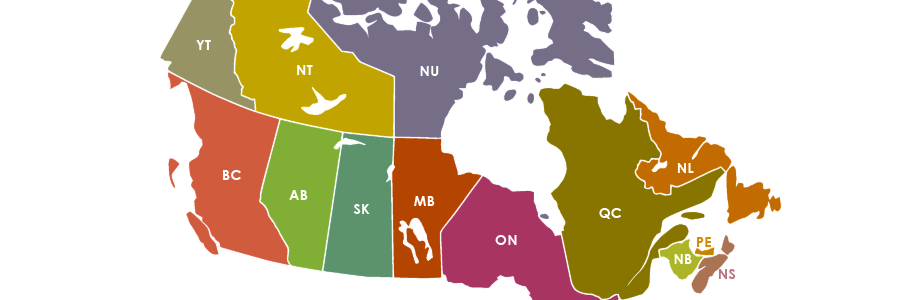
Canadian Provinces
If you want to quickly familiarize yourself with Canada’s provinces, the Canada Abbreviation State is a helpful resource. It lists the most commonly used provincial abbreviations and briefly describes each area. Abbreviations save time and space when discussing Canadian provinces and avoid ambiguity. For example, the acronym ‘ON’ could refer to Ontario or Ottawa, but ‘O.N.T.’ unambiguously refers to only Ontario. The Canada Abbreviation State is organized alphabetically by province, listing the abbreviation first, followed by the full name in parentheses, and then briefly describing the region.
Canada Initials
What are the initials for Canada? The initials “C.A.” represent Canada, a magnificent country in northern North America.
These initials, when mentioned, evoke a sense of awe, revealing a land of vast natural beauty, diverse cultures, and rich heritage.
Canada, officially known as the Dominion of Canada, is the second-largest country in the world by land area. Its size and diverse geography make it an enticing destination for adventure seekers and nature enthusiasts. From the pristine wilderness of the Rocky Mountains to the breathtaking coastline of the Atlantic and Pacific Oceans, Canada’s initials promise thrilling experiences and unparalleled scenery.
In addition to its natural wonders, Canada is renowned for its warm-hearted and friendly people. The diverse population of this country represents a mosaic of cultures, languages, and traditions, making it a multicultural haven. The initials “C.A.” encapsulate the inclusiveness and unity inherent in Canadian society.
Moreover, Canada is known for its bold and adventurous spirit. Its initials reflect a nation that embraces innovation and progress, always striving to push boundaries and make groundbreaking contributions. From groundbreaking inventions like insulin and the telephone to the pioneering spirit of explorers such as Samuel de Champlain and Alexander Mackenzie, Canada has a legacy of trailblazing achievements that continue to inspire and shape the world.
The history and heritage of Canada are also encapsulated within its initials. The “C” represents its colonial past, influenced by French and British settlements. At the same time, the “A” harkens back to the Authentic Indigenous peoples who have inhabited this land for thousands of years. These initials symbolize the diverse roots and interwoven narratives that have shaped Canada’s identity.
Furthermore, “CA” represents a people with a strong sense of social justice and equality. Canada is known for its commitment to human rights, gender equality, and environmental conservation, making it a progressive and discerning nation. Its initials serve as a reminder of the ongoing pursuit of inclusivity and fairness that Canada strives to uphold.
What is the Alberta Canada Abbreviation?
Alberta Province Abbreviation: A.B.
Alberta is a western province of Canada located between British Columbia and Saskatchewan. Its capital city is Edmonton.
British Columbia surrounds this region in western Canada to the west, Saskatchewan to the east, the Northwest Territories to the north, and the U.S. state of Montana to the south. It is renowned for its varied terrains, spanning from the prairies in the south to the Rocky Mountains in the west.
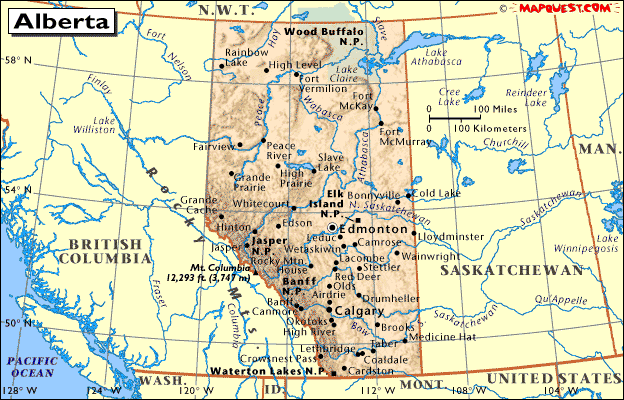
What is the Abbreviation for British Columbia?
British Columbia Province Abbreviation: B.C
British Columbia is a western province of Canada, located between the Pacific Ocean and the Rocky Mountains. Its capital city is Victoria.
This province is situated along Canada’s west coast and shares borders with the Pacific Ocean to the west, Alaska to the northwest, Yukon to the northeast, and the U.S. states of Washington, Idaho, and Montana to the south.

What is the Abbreviation for Manitoba?
Manitoba Province Abbreviation: M.B.
Manitoba is a central Canadian province between Ontario and Saskatchewan. Its capital city is Winnipeg.
Located in central Canada, this province borders Saskatchewan to the west, Ontario to the east, Nunavut to the north, and the U.S. states of North Dakota and Minnesota to the south. Its flat terrain features many lakes, rivers, and forests, with Lake Winnipeg being one of its most prominent natural landmarks. The province’s capital, Winnipeg, is situated near the longitudinal center of North America and boasts a vibrant arts and culture scene with a diverse population and many galleries, museums, and theatres.
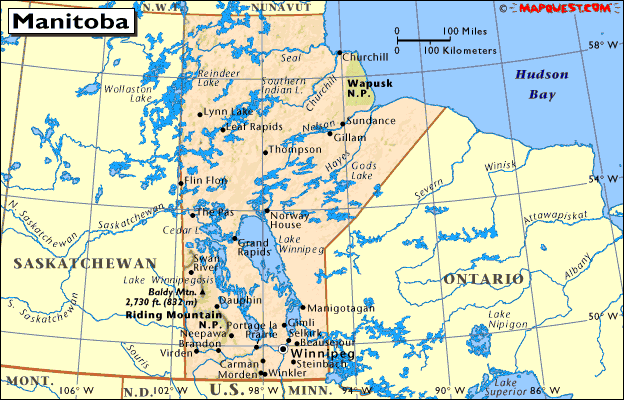
What is the Abbreviation for New Brunswick?
New Brunswick Province Abbreviation: N.B.
New Brunswick is an eastern Canadian province between Nova Scotia and Quebec. Its capital city is Fredericton.
Did you know New Brunswick is a beautiful province on Canada’s east coast? It borders Quebec to the north, Nova Scotia to the east, and the U.S. state of Maine to the west. The Bay of Fundy Coast is a must-see attraction with its stunning tides, picturesque fishing villages, and beautiful beaches. The province’s interior features rolling hills, forests, and rivers.
If you’re looking for a vibrant city to explore, Fredericton, the capital city of New Brunswick, has a lot to offer. It is located near the center of the province and is home to several universities, museums, and cultural attractions. Saint John, the largest city in the area, has a rich history as a major port city.
New Brunswick’s economy is diverse and thriving, with major industries including forestry, agriculture, fishing, and manufacturing. The province has a significant pulp and paper industry and a growing technology sector.
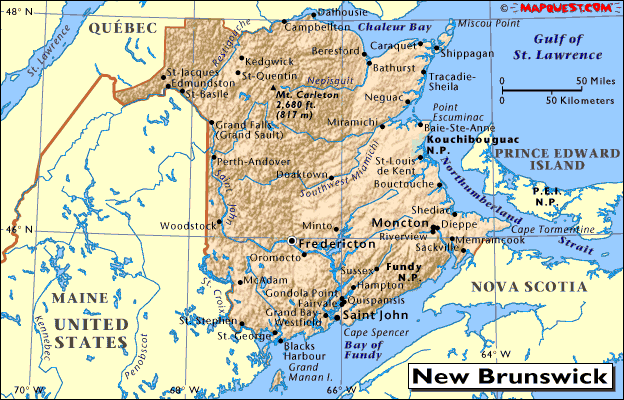
What is the Newfoundland and Labrador Abbreviation?
Newfoundland and Labrador Province Abbreviation: N.L
Newfoundland and Labrador is an eastern Canadian province located east of Quebec. Its capital city is St.
On Canada’s eastern coast, there is a province that shares borders with Quebec on the west and the Atlantic Ocean on the east. This province is composed of two separate regions: Newfoundland, an island situated off the mainland, and Labrador, which is connected to Quebec via a land boundary. Each area boasts its unique cultural identity and scenic beauty.
The capital city of Newfoundland and Labrador is St. John’s, located on the eastern coast of the Newfoundland island. This city is known for its lively arts and culture scene and numerous museums and historic sites. Meanwhile, the largest city in Labrador is Happy Valley-Goose Bay, a key hub for transportation and resource development.
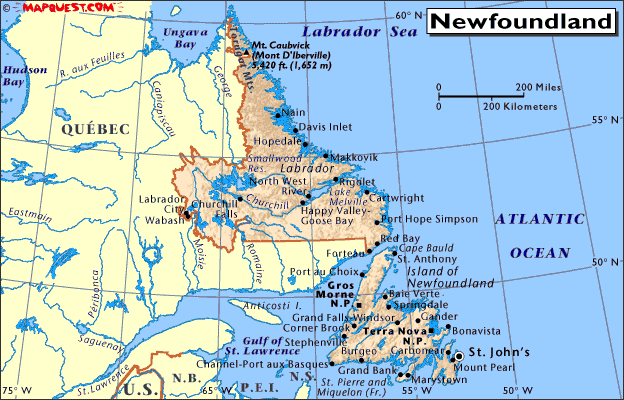
What is the Nova Scotia Abbreviation?
Nova Scotia Province Abbreviation: N.S.
Nova Scotia is an eastern Canadian province located east of New Brunswick and south of Prince Edward Island. Its capital city is Halifax.
Nova Scotia is a beautiful province situated on the east coast of Canada, adjacent to New Brunswick on the west and the Atlantic Ocean on the east. The province boasts a lengthy coastline with many bays, beaches, coves, and scenic lighthouses. On the southeast coast of Nova Scotia lies Halifax, the capital city famous for its universities, museums, and cultural sites, including the historical Halifax Citadel.
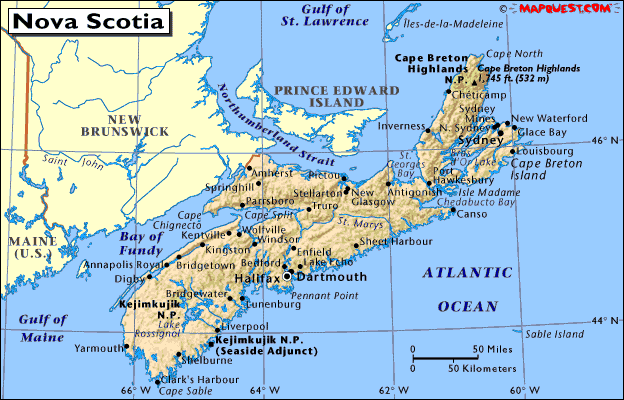
What is the Ontario Abbreviation?
Ontario Province Abbreviation: O.N.
Ontario is a central Canadian province between Manitoba and Quebec. Its capital city is Toronto.
Ontario, a province in central Canada, shares borders with Manitoba to the west, Quebec to the east, and multiple U.S. states to the south, including Minnesota, Michigan, Ohio, Pennsylvania, and New York. This province boasts the presence of Canada’s capital, Ottawa, and Toronto, the country’s largest city.
Toronto is a dynamic economic and cultural center renowned for its flourishing arts scene, numerous museums, and iconic landmarks, including the C.N. Tower. Ontario’s landscape varies, from unspoiled lakes and dense forests in the north to vibrant cities and rolling farmlands in the south. The province is home to breathtaking natural wonders such as Niagara Falls, Algonquin Provincial Park, and the Bruce Peninsula.
Toronto abbreviation two letters: “TO” stands for Toronto, the vibrant and multicultural city in Ontario, Canada. Known for its diverse population, stunning skyline, and bustling atmosphere, Toronto has become a significant destination for travel, commerce, and entertainment
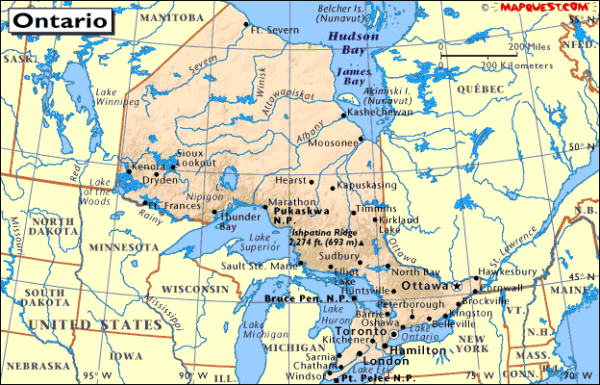
What is the Prince Edward Island Abbreviation?
Prince Edward Island Province Abbreviation: P.E.I
Prince Edward Island is an eastern Canadian province located east of New Brunswick and north of Nova Scotia. Its capital city is Charlottetown.
On Canada’s east coast, in the Gulf of St. Lawrence, lies Prince Edward Island, the smallest province in size and population. The island is a popular tourist destination with a scenic coastline, red-sand beaches, and picturesque fishing villages. Charlottetown, the capital city on the southern coast, boasts several historic sites and museums, including the Confederation Centre of the Arts.
The province’s economy is primarily based on agriculture and tourism, focusing on potato production, fisheries, and aquaculture. In addition to its natural beauty and economic strength, Prince Edward Island also has a rich cultural heritage, famously being the setting of the beloved novel “Anne of Green Gables” by Lucy Maud Montgomery. Visitors can explore attractions related to the book, such as the Green Gables Heritage Place.
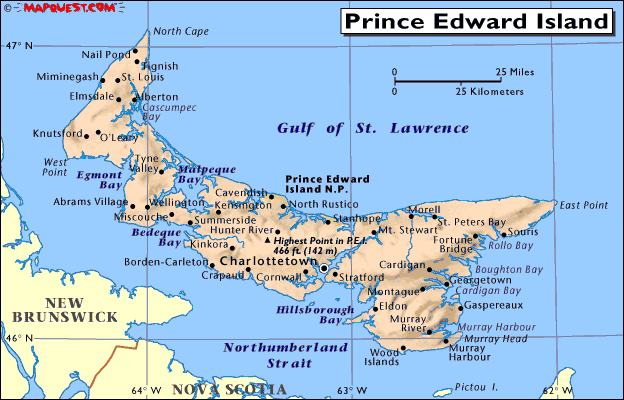
What is the Abbreviation for Quebec, Canada?
Quebec Province Abbreviation: Q.C.
Quebec is a central Canadian province located east of Ontario and west of Newfoundland and Labrador. Its capital city is Quebec City.
Did you know that Québec, a province in eastern Canada, is the largest province in the country by area and the second-most populous province after Ontario? Québec is renowned for its rich cultural heritage and breathtaking natural beauty. The provincial capital, Québec, is among the oldest cities in North America and boasts various historic sites and landmarks. The Château Frontenac, a grand hotel overlooking the St. Lawrence River, is one of the most notable landmarks.
Québec’s landscape is characterized by rugged mountains, dense forests, and vast lakes and rivers, making it a popular tourist destination. The Laurentian Mountains, Mont-Tremblant National Park, and the Gaspé Peninsula are some of the most visited attractions in the province.
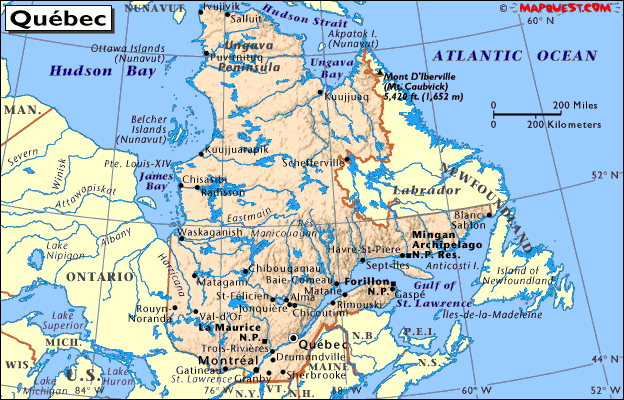
What is the Saskatchewan Abbreviation?
Saskatchewan Province Abbreviation: S.K.
Saskatchewan is a western Canadian province between Manitoba and Alberta. Its capital city is Regina.
Located in the central region of Canada, Saskatchewan is a province that shares its borders with Alberta to the west, Manitoba to the east, the Northwest Territories to the north, and the U.S. states of Montana and North Dakota to the south. The province is famous for its vast prairies that stretch across much of its southern area.
Saskatchewan’s capital city is Regina, situated in the southern part of the province. It is home to various museums, including the Royal Saskatchewan Museum and the picturesque Wascana Centre Park. The largest city in Saskatchewan is Saskatoon, located in the province’s central part. It is a cultural center with many theatres, galleries, and festivals throughout the year.
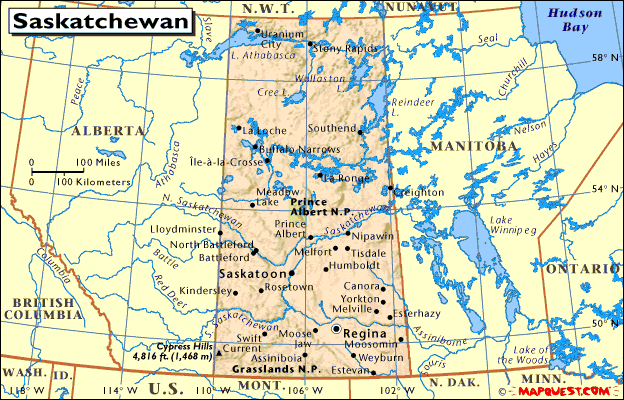
Postal abbreviation Canada
Provincial and Territorial Abbreviations: To help differentiate between provinces and territories in Canada, unique abbreviations are often used, particularly in French-speaking regions. Here’s a list of these abbreviations and their corresponding parts:
N.L. Newfoundland and Labrador postal abbreviation
Located in the easternmost part of Canada, this region consists of the island of Newfoundland and mainland Labrador. Known for its rugged coastlines and vibrant cultural heritage, Newfoundland and Labrador offer breathtaking landscapes and warm hospitality.
N.S. Nova Scotia postal abbreviation
The province of Nova Scotia encompasses a peninsula and nearby islands renowned for its historical significance and mesmerizing coastal beauty. From the iconic Peggy’s Cove to the vibrant city of Halifax, Nova Scotia has something for everyone.
N.B. New Brunswick postal abbreviation
Located on the country’s east coast, New Brunswick is known for its stunning Bay of Fundy, lively festivals, and picturesque landscapes. This province, rich in history and charming small towns, provides a delightful mix of cultural experiences.
Q.C. Quebec postal abbreviation
Québec is the largest province in Canada, home to French-speaking communities, vibrant cities, and breathtaking natural wonders. From the cobblestone streets of Old Québec City to the stunning Charlevoix region, Québec reflects its rich cultural heritage.
ON Ontario postal abbreviation
As the most populous province, Ontario is a vibrant region offering diverse urban and natural attractions. From the iconic Niagara Falls to the cosmopolitan city of Toronto, Ontario has a bustling energy and numerous hidden gems to explore.
M.B. Manitoba postal abbreviation
Manitoba offers a unique blend of prairies, forests, and lakes in the heart of Canada. With its rich indigenous heritage and diverse wildlife, this province invites visitors to explore and appreciate its natural wonders.
Canadian provinces and territories abbreviation in French
Acronym for Canadian Provinces
Here is the Canadian province’s abbreviations list in French:
- Alberta short Form: A.B.
- Colombie-Britannique (British Columbia) short Form: CB
- Île-du-Prince-Édouard (Prince Edward Island) short Form: ÎPÉ
- Manitoba short Form: M.B.
- Nouveau-Brunswick (New Brunswick) short Form: N.B.
- Nouvelle-Écosse (Nova Scotia) short Form: NÉ
- Ontario Short Form: ON
- Québec short Form: QC
- Saskatchewan: SK
- Terre-Neuve-et-Labrador (Newfoundland and Labrador) short Form: T.N.L.
- Territoires du Nord-Ouest (Northwest Territories) short Form: TNO
- Yukon short Form: Y.K.
- Nunavut short Form: NU
How are Abbreviations Chosen?
In Canada, abbreviations are selected based on practicality, clarity, and consistency with established naming conventions. Various stakeholders, such as government officials, industry leaders, and public members, are consulted to choose appropriate abbreviations for specific terms or phrases. Consistency across different industries and jurisdictions also plays a significant role in selecting Canadian abbreviations to ensure universal understanding and recognition.
In some cases, ease of use and memorization are considered, with shorter and simpler abbreviations being preferred over longer and more complicated ones that may confuse.
The selection of abbreviations follows specific guidelines to ensure clear, unambiguous, and easily understood communication. Avoiding abbreviations that could be confused with other terms or phrases is crucial, as well as using standardized abbreviations whenever possible. It is also essential to consider the audience using the abbreviations, choosing commonly understood abbreviations or avoiding them altogether in favour of straightforward language if necessary.
By carefully considering practicality, consistency, clarity, and audience needs, Canadians can create a clear and effective communication system that serves the needs of everyone involved.
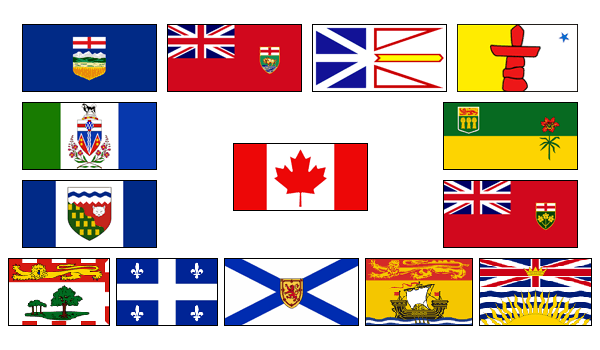
What are the Different Types of Abbreviations Used in Canada?
In Canada, various types of abbreviations are commonly used in different contexts. These abbreviations serve to streamline communication and make it more efficient.
One type of abbreviation commonly used in Canada is the postal code abbreviation. Canadian postal codes are alphanumeric codes that represent specific geographic areas. These codes are often abbreviated when used in addresses or on envelopes for faster and more accurate mail sorting.
Another type of abbreviation frequently encountered in Canada is the province and territory abbreviations. Each province and territory has unique abbreviations, such as ON for Ontario, QC for Quebec, BC for British Columbia, AB for Alberta, etc. These abbreviations are commonly used in addresses, official documents, and casual conversations.
In addition to these geographical abbreviations, other types of abbreviations are used across various industries and sectors in Canada. For example, the medical field uses abbreviations for medical conditions (e.g., C.P.R. for cardiopulmonary resuscitation). In contrast, the business sector may use acronyms to refer to organizations or industry-specific terms (e.g., CIBC for Canadian Imperial Bank of Commerce).
It is important to note that while these abbreviations can help facilitate communication, it is crucial to ensure their proper usage and understanding by all parties involved. Misinterpretation or misuse of an abbreviation can lead to confusion or misunderstandings.
Overall, using different types of abbreviations in Canada is vital in enhancing communication efficiency across various domains within the country.
Pros and Cons of Using Abbreviations for Canadian Provinces
Using abbreviations for Canadian provinces can have both advantages and disadvantages. Let’s explore the pros and cons of using abbreviations for Canadian provinces.
Pros:
1. Space-saving: Abbreviations allow concise and space-saving representations of the Canadian provinces’ names. This can be particularly beneficial when character limits, such as in social media posts or limited physical signage, are a concern.
2. Time-saving: Using abbreviations can save time when writing or repeatedly typing Canadian provinces’ names, especially in cases where accuracy and speed are crucial, like data entry or form-filling processes.
3. Familiarity: Abbreviations such as B.C. (British Columbia), A.B. (Alberta), ON (Ontario), Q.C. (Quebec), etc., have become widely recognized and understood across Canada over time. They have become part of the common vernacular, making communication more efficient among Canadians.
Cons:
1. Lack of clarity: While abbreviations may be familiar to Canadians, they may not always be universally understood by individuals from other countries or regions who may not be familiar with Canadian provincial abbreviations.
2. Misinterpretation: It is possible to misinterpret an abbreviation if it has multiple possible meanings or closely resembles another term or acronym. This could lead to confusion in communication and potentially impact the intended message.
3. Informality: Some argue that using abbreviations for provincial names might come across as informal or lacking proper respect for the full name of a province, especially in formal contexts such as legal documents, official reports, or academic papers.
It is essential to consider these pros and cons when deciding whether to use abbreviations for Canadian provinces depending on the specific context, audience, and purpose of communication.
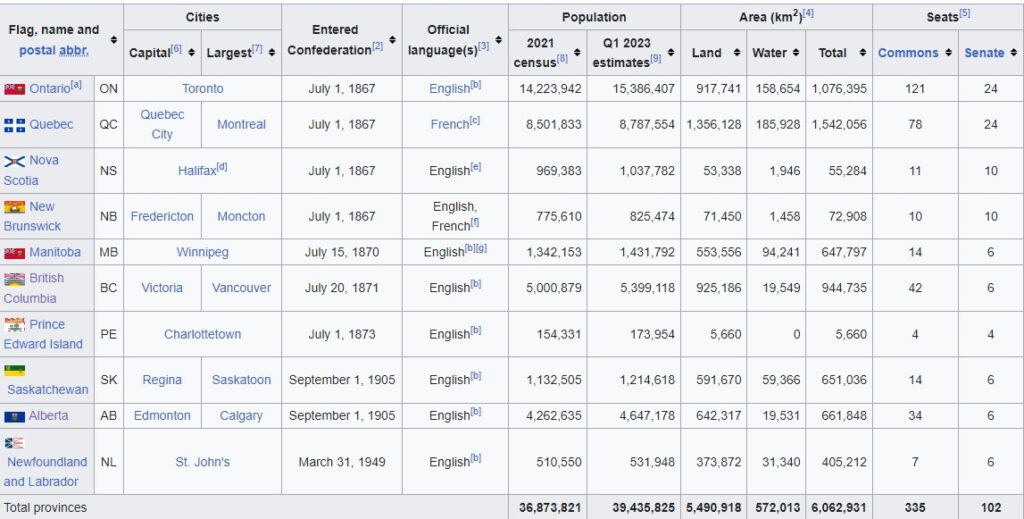
The two-letter codes for Canadian provinces and territories
Canada is made up of 13 provinces and territories, each of which is identified by a unique two-letter code. These codes are commonly used in official documents, correspondence, and addresses to distinguish the various regions within Canada. It is essential to comprehend the meaning of these codes to ensure effective communication and precise record-keeping.
The two-letter codes are derived from the English name of each province or territory, except Quebec, which utilizes its French name. The first letter of the code represents the initial letter of the province or territory’s name, while the second letter represents the second or another significant letter.
For instance, Ontario’s code is ON, with “O” representing the first letter of “Ontario” and “N” representing the last letter. Similarly, British Columbia is represented by B.C., with “B” representing “British” and “C” representing “Columbia.”
It’s worth noting that some codes have been assigned based on historical reasons. For example, the Northwest Territories, which once included parts of Nunavut and Yukon, is still represented by the code N.T., even though it no longer comprises those areas.
The two-letter codes assigned to Canadian provinces and territories provide a swift and efficient means of identifying the various regions of Canada. Individuals can communicate effectively and maintain accurate records by understanding how these codes are structured.
FAQ
How do you use Canadian province and territory abbreviations in addresses and correspondence?
Using the correct Canadian province and territory abbreviations in addresses and correspondence is vital to ensure efficient communication and accurate delivery. Here are some tips for using these abbreviations effectively:
– Use the appropriate abbreviation: Always use the correct two-letter code for the province or territory you’re addressing. For instance, use “B.C.” instead of “B.C.” or “Brit Col.” when sending a letter to someone in British Columbia.
– Include the abbreviation in the address line: Write out the address and include the two-letter code immediately following the city and before the postal code. For example, “123 Main Street, Toronto ON M5V 1Z4”.
– Capitalize the abbreviation: Always capitalize the two-letter code in an address or correspondence.
– Use a comma between city and province/territory: To clarify where the person is located, use a comma to separate the city and province/territory. For instance, “Toronto, ON.”
– Avoid using abbreviations in the salutation: Using acronyms in the greeting is unnecessary. Address the letter or email recipient by the full name of the province or territory. For example, “Dear John, I hope this letter finds you well in British Columbia.”
By following these guidelines, you can effectively use Canadian province and territory abbreviations in your addresses and correspondence, making communication more efficient and accurate.
Is C.D.N. Short for Canada?
Canada is often abbreviated as C.D.N., especially in trade and commerce. This shorthand is frequently used on documents like shipping labels and invoices to refer to Canada briefly. The abbreviation is derived from the French term “Canada” and is commonly employed in international trade to identify Canadian goods. For instance, if shipping a product from Canada to another country, the shipping label may list the destination country as “U.S.A.” and the origin country as “C.D.N.”
Aside from trade and commerce, C.D.N. is a prevalent shorthand used in other situations where brevity is crucial. News headlines and social media posts may use C.D.N. instead of writing out “Canada” in total. It’s important to note that C.D.N. is not an official abbreviation for Canada. C.A. is the official two-letter abbreviation, while CAN is the three-letter abbreviation. Nevertheless, C.D.N. is still a valuable and convenient shorthand for referencing Canada in various contexts.
Is the Abbreviation for Canada and California the Same?
When you come across the abbreviation “C.A.,” it could be referring to either Canada or California. However, the context in which it is used usually makes it clear which one is being referred to. For instance, if you mention that you are going to C.A. while discussing North American locations, people will likely assume you mean California, given its location. On the other hand, if you select C.A. as your country of residence while filling out a form, it will be assumed that you are referring to Canada.
It is rare to confuse the two abbreviations because they are typically used in different contexts. When referring to California, people prefer to use the full name of the state to avoid confusion. Other factors that can help distinguish the two include their postal codes, accents, slang terms, and cultural attributes.
“C.A.” is the postal abbreviation for Canada and California. However, there are alternative abbreviations you can use for each, such as “CAN” for Canada and “C.A.L.” for California. Nevertheless, these are less commonly used than “C.A.”
Confusion between the two abbreviations is rare because of the different contexts and factors involved.
What is the 3-letter Abbreviation for Canada?
Canada in short form: The three-letter abbreviation for Canada is CAN.
How many provinces are there in Canada?
Canada consists of ten provinces and three territories. The ten provinces are British Columbia, Alberta, Saskatchewan, Manitoba, Ontario, Quebec, New Brunswick, Prince Edward Island, Nova Scotia, Newfoundland and Labrador. The three territories are Northwest Territories, Yukon, and Nunavut.
Each province has its own unique characteristics, economy, and cultural identity. Provincial governments are responsible for various aspects within their jurisdictions, such as healthcare, education, natural resources management, and transportation. They also have the power to levy taxes and regulate several areas of governance.
The provinces vary in size, population, and geographical features. For example, Ontario is the most populous province and covers a large area, while Prince Edward Island is the smallest province in size and population. British Columbia is known for its stunning mountain ranges and coastal landscapes, while Alberta is renowned for its vast oil reserves and rich wildlife. Quebec is predominantly French-speaking and has a distinct cultural heritage, while Manitoba is known for its multiculturalism and diverse population. Newfoundland and Labrador are the easternmost provinces, boasting rugged coastlines and fishing communities.
The three territories are located in the northern part of the country and are known for their vast, untouched wilderness, Arctic landscapes, and Indigenous cultures. They have unique governance structures and face distinctive challenges due to their remote locations and extreme climates.
Most of the acts that hooked up the provinces and territories of the Canadian Federation were acts of the British Parliament because the federal union in 1867 no longer marked Canada’s independence from Great Britain.
How many territories are in Canada?
Three territories. The territories are Northwest Territories, Nunavut, and Yukon.
The foremost distinction between a Canadian province and a Canadian territory is that a province is an advent of the Constitution Act (17 April 1982), while a territory is created using federal law. Thus, the federal authorities have extra direct manipulation over the territories.
Conclusion
Abbreviations are a crucial component of effective communication within the Canadian Armed Forces. They allow for quick and efficient transmission of information, ensuring clear and concise messages. Whether referring to the Canadian Armed Forces as a whole or specific military ranks and units, abbreviations are vital in streamlining communication and enhancing operational efficiency.
Commonly Used Abbreviations in Canada
Abbreviations often refer to the Canadian Armed Forces and its branches. Some commonly used abbreviations include:
- Canadian Armed Forces – CAF
- Royal Canadian Navy – RCN
- Canadian Army – CA
- Royal Canadian Air Force – RCAF
- Canadian Joint Operations Command – CJOC
Additionally, abbreviations are used to represent different military ranks and units, such as:
- Chief of Defense Staff – CDS
- General – Gen
- Colonel – Col
- Infantry – Inf
- Armoured Regiment – AR
- Military Police – MP
- Yonge-Dundas Square in Toronto is Now Called “Sankofa Square” - December 17, 2023
- Best Western Brooks’ SureStay Plus debuts in Alberta - December 16, 2023
- Air Canada Arrives in Tulum, Mexico as the First Canadian Airline - December 16, 2023
